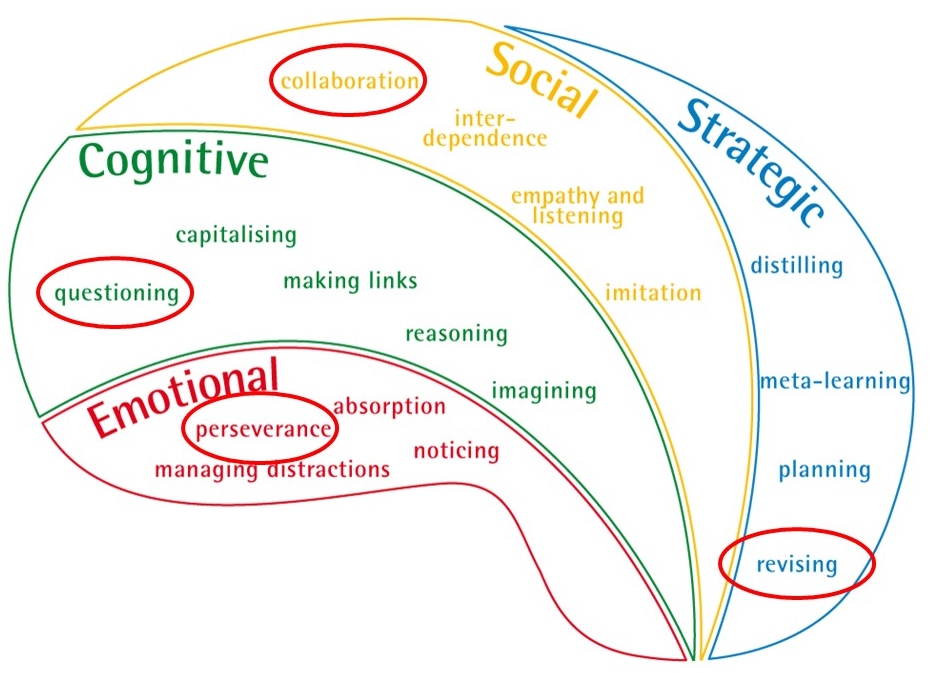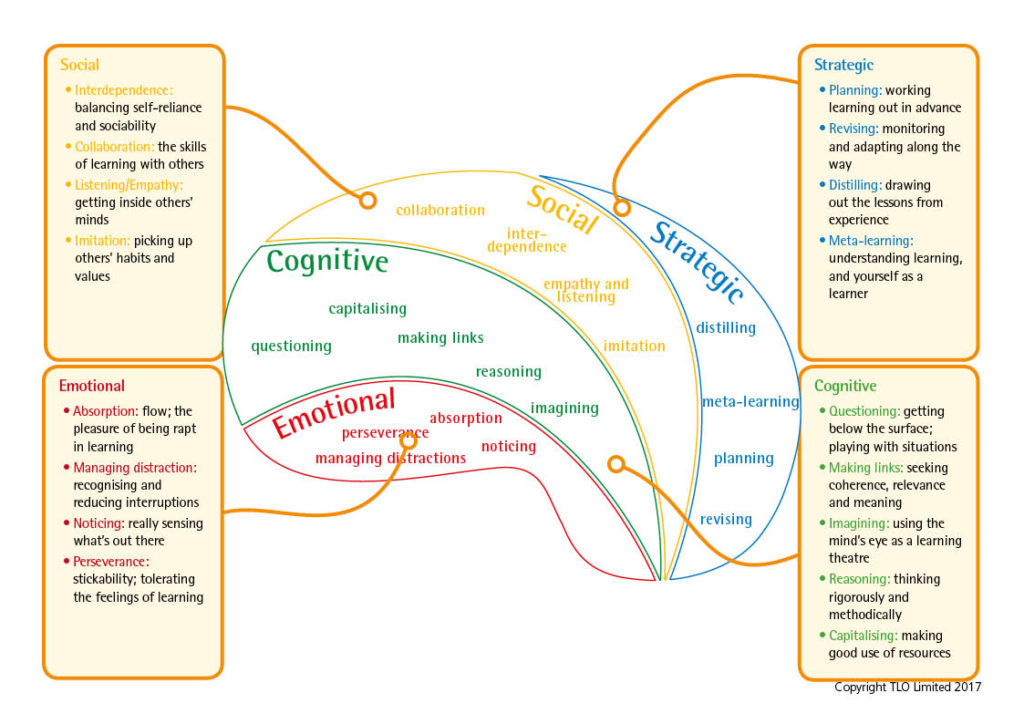What are the important behaviours of successful learners and which ones are important to make a start on?
A supple learning mind
The Supple Learning Mind framework, as also shown in the wheel below, was originally conceived and researched by Professor Guy Claxton. It captures the key psychological characteristics that are judged to be of the highest value in helping students to learn and thrive in a complex world. These dispositions are inherent in us all. But they are not fixed at birth, or when we leave school: they can be developed by everyone regardless of ‘ability’, social background, or age. There are no limits to extending our learning power.
3a. Look at yourself learning
Try this activity to raise your awareness of using your learning habits.
You could do this: by yourself or with others
Ask yourself ‘what happened here?’ Allow yourself 10 minutes to work out the story.
Before you look at the rating wheel just have a go at writing down what sort of learning behaviours you were using and translate your ideas into a mind map.
Now look at the Rating wheel.
Colour in the segments that show a learning behaviour you thought you had used as you were working out the story. The more you think you used them the more you colour toward the edge of the circle.
Ask yourself;
- Which learning behaviour did I/we use most?
- Which did I/we not use at all?
- Which might have been useful and yet I/we didn’t use them?
- What does the pattern look like?
- Would it be different for a different sort of activity?
Intriguing isn’t it? Find out more about these learning behaviours below.
3b. Uncovering the learning territory
The learning behaviours have been grouped under four domains of learning; emotional, cognitive, social, strategic (meta-cognitive). They are sometimes referred to as learning muscles, energies or powers. Just as we can build our physical muscles with different kinds of exercise, so we can exercise our learning muscles to develop their strength and stamina. Without such exercise they can easily wither and fall into disuse.
Download Learning Power Muscles for a brief description of each learning behaviour.
3c. Know your students as learners
Are you aware of whether or how well your students use these valuable learning behaviours?
Think about your students’ current strengths and weaknesses as learners. See your students as learners rather than performers.
Try to fill the name of a student into each descriptor, and think what evidence you might have that supports this judgement.
- Analyse your answers. Are there any students who are not mentioned? Where might you place them?
- Is there a gender imbalance in the students you have named?
- Are the named students mostly high or low attainers, or do they represent a range of attainment?
- What about those students who fear challenges or don’t thrive well when working with others?
- What other questions does your list of answers raise?
3d. Habits to make a start on
Experience in schools suggests that it’s best to select one key disposition from each domain of learning; Cognitive – Questioning, Social – Collaboration, Emotional – Perseverance and Strategic – Revising. The Foundational Four.
Why start with these four dispositions? Perseverance because teachers find that it’s the disposition to keep going, to remain engaged, to relish challenge and go for goals that’s most lacking in many students. Questioning because this is the driver of learning; wanting to know why, how, if, when and so forth connects us with learning. Collaboration because ‘working together’ is a familiar classroom activity and yet few students know how best to learn profitably together. Revising because learning is a process and like any process it needs managing and adapting to work really well. This foundational set of four offer the soil in which other dispositions can take root more easily.

More about the Supple Learning Mind framework
Model 1. The Supple Learning Mind framework of high value learning behaviours
A rich framework for learning
The Supple Learning Mind framework embraces each of the domains of learning and these are shown in its four parts:
- The Emotional domain of learning (sometimes described as Resilience)
- The Cognitive domain of learning (sometimes described as Resourcefulness)
- The Social domain of learning (sometimes described as Reciprocity)
- The Strategic domain of learning (sometimes described as Reflectiveness)
This learning framework shows that learning isn’t just about having a good memory; it includes how we feel, how we think, how we learn with others and how we manage the process of learning. It shows that learning is a complex process. Furthermore it provides a language that helps teachers to think about how they cultivate each of the learning behaviours and helps students to gain a better personalised understanding of how they learn content.
Each domain clusters together the high value learning behaviours that best make that domain work well. For example the social domain is made up of the learning behaviours of interdependence, collaboration, listening and empathy and imitation.

![BLP_Brain_Generic_no-Rs-[Converted]](https://www.buildinglearningpower.com/wp-content/uploads/2016/12/BLP_Brain_Generic_no-Rs-Converted-300x216.png)


Comments are closed.